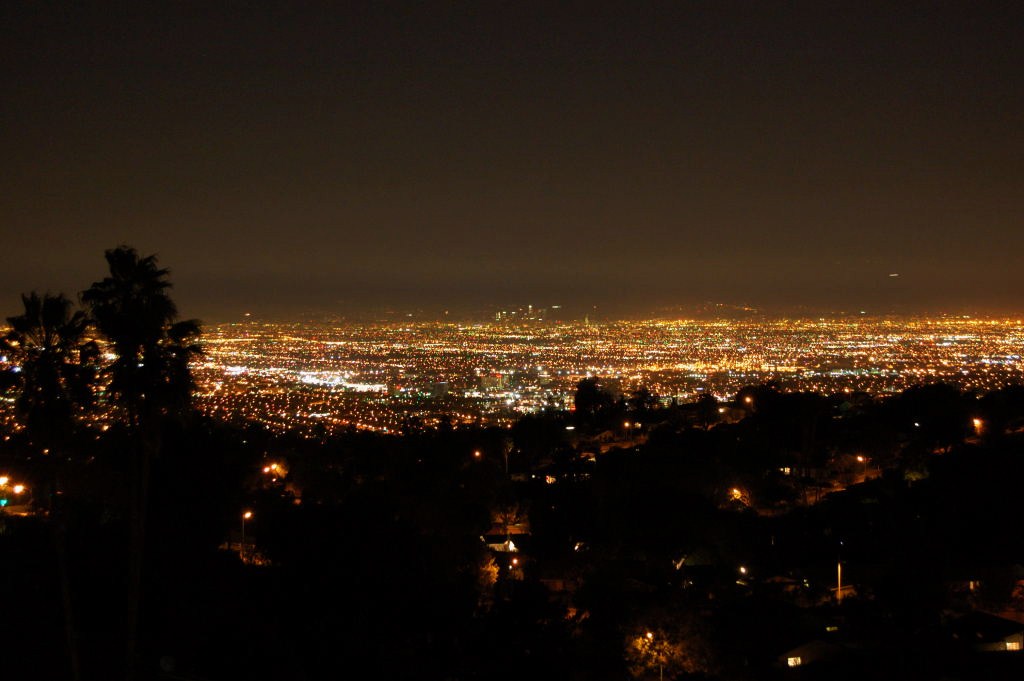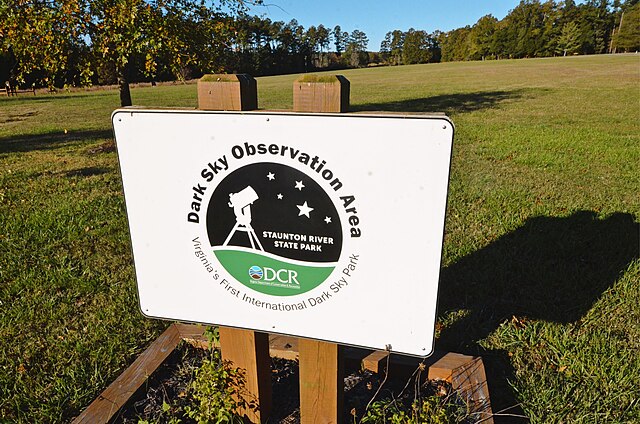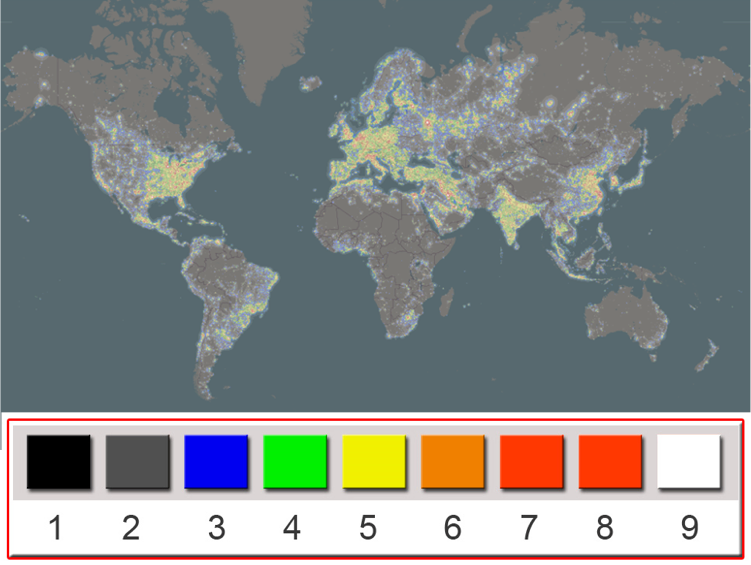Light Pollution
Sky Blindness (at Epidemic Levels of Illumination)
Our galaxy is awash in stars, and on a clear night you should be able to see around 4,000 of them: the bright and the not-so-bright. Is this the experience of most people? Of course not, for we live in an electrified world where outside lighting is relatively cheap, plentiful, and most often, “un-necessarily untargeted,” free to shine well beyond the intended area of concern.


The Irony of "Cosmic Glaucoma," Southern California Style
Dlazzaro, CC BY-SA 3.0
http://creativecommons.org/licenses/by-sa/3.0/,
via Wikimedia Commons
With each photon of light cast needlessly skyward, we are helping to isolate ourselves from more and more of the universe around us. We are self-inducing a kind of blindness which robs us of inspiration, and beauty, and scientific discovery.
There are literally hundreds of millions of people – if not billions – alive today that will die before ever seeing the awe-inspiring vista that is in full view only a few miles above us, beyond the light-bright atmosphere within which a sea of uncounted stray light rays cloak and choke the stars.


“Night sky from Tony Grove Lake, United States”
by Greg Rakozy
via Wikimedia Commons
Incorporated into animation by SRO, Inc.
While we understand the necessity of outdoor lighting for safety, promotion and ambiance, who can argue against its conservative and focused use? We are all stewards of Earth’s resources and natural beauty. Please be a good caretaker of this cosmic gift to us and future generations!
Seeing the Problem in a Brand New Light (Map)
There’s a map for everything in this digital world, and the proliferation of man-made light has been charted as well. Click on the interactive map below to explore…
As you scan, note the difficulty in finding gray / dark blue areas, particularly in the eastern half of the US, where light pollution is at a minumum.
What's
My
"Bortle
Number??"
Click the map and find out!
CC BY-SA 3.0 via Wikimedia Commons
overlay by SRO, Inc.
In 2001, American amateur astronomer John Bortle sought to characterize the relative darkness of skies according to a nine step scale.
“One” represents pristine conditions absent of any light pollution from which the Milky Way is bright and obvious. Sky “nine” is used to describe the absolute worst ambient lighting – think “astronomy from Times Square” – allowing only the very brightest objects (major planets and stars) to be seen.
Refer to the color coding as you explore, then ask yourself:
Q. What’s my Bortle number?
Q. Can I find better (darker) skies relatively close to where I live?
The problem is so entrenched that the developed countries and continents are clearly outlined from the ground up. It will take a significant commitment of government and concerned citizenery to reverse this disappointing trend. Here’s a bit of disheartening awareness: the data for the map above is now two years old…what are the odds that a current map would show a decrease in this kind of illumination??
Getting Away From it All
Fortunately, there are still places where darkness is the draw, areas worthy of a diversion or destination in their own right. These have been established largely through the conscientious and dedicated efforts of organizations like the International Dark-Sky Association and their network of passionate volunteers spanning the globe.

Yes, Virginia There Really is...
State Parks can be an ideal candidate for hosting preserves which showcase the night sky as a precious natural resource. Not only might they offer governmental funding and oversight but also come with the authority to set and enforce restrictions on lighting encroachment. As an added benefit, they help with mutually beneficial promotional consideration for attracting interest and awareness.
The sign above welcomes star-gazers to the first "Dark Sky Observation Area" to be established in Virginia, this at Staunton River State Park about 75 miles southwest of Richmond. It is located within three driving hours of multiple major metroplitan areas yet features awe-inspiring vistas of starry skies free of significant light pollution.

Yes, Virginia There Really is...
State Parks are a natural candidate for hosting the kind of preserves needed to showcase the night sky as a precious natural resource. They offer governmental oversight and can enforce restrictions in addition to providing mutually beneficial promotional consideration.
The sign above welcomes star-gazers to the first "Dark Sky Observation Area" to be established in Virginia, this at Staunton River State Park about 75 miles southwest of Richmond. It is located within three driving hours of major metroplitan areas yet features awe-inspiring vistas of starry skies free of significant light pollution.
“SR Dark Sky ESP,”
Virginia State Parks
CC BY 2.0
via Wikimedia Commons
There are several locations in the United States where the majesty of night is still sacred and not just in the sparsely populated Southwest. Cherry Springs, PA; various parks in Michigan; a newly established retreat in southeastern Oregon (“the Outback”) are just a few observing spots that have been designated. An easy internet search can help you find one and give you information on any programs associated with it. Prepare to be absolutely amazed…
Staunton River: a Case Study in Successful Activism
What kind of effort does it take to make a difference? If you need a roadmap, consider the application to designate Staunton State Park as an officially designated Dark Sky site. The correspondence identifies an opportunity, features common sense arguments likely to be favored by government officials and appeal to an engaged public, then uses the significant clout and resources of a world-renowned organization – Dark Sky, International – to help frame and present the proposal.
Activism of this kind consists mainly of identifying reasonable “targets of opportunity” (sites, politicians, community leaders, entities with common interests) and then formulating a plan of action which includes persuasive letter writing, a bit of groundwork, and partnering with people who have been down the road before and know how to navigate the twists and turns that always come up. In a way, it’s like the history of SRO, but not nearly as difficult!
Who’s ready to fight… for the night?!








